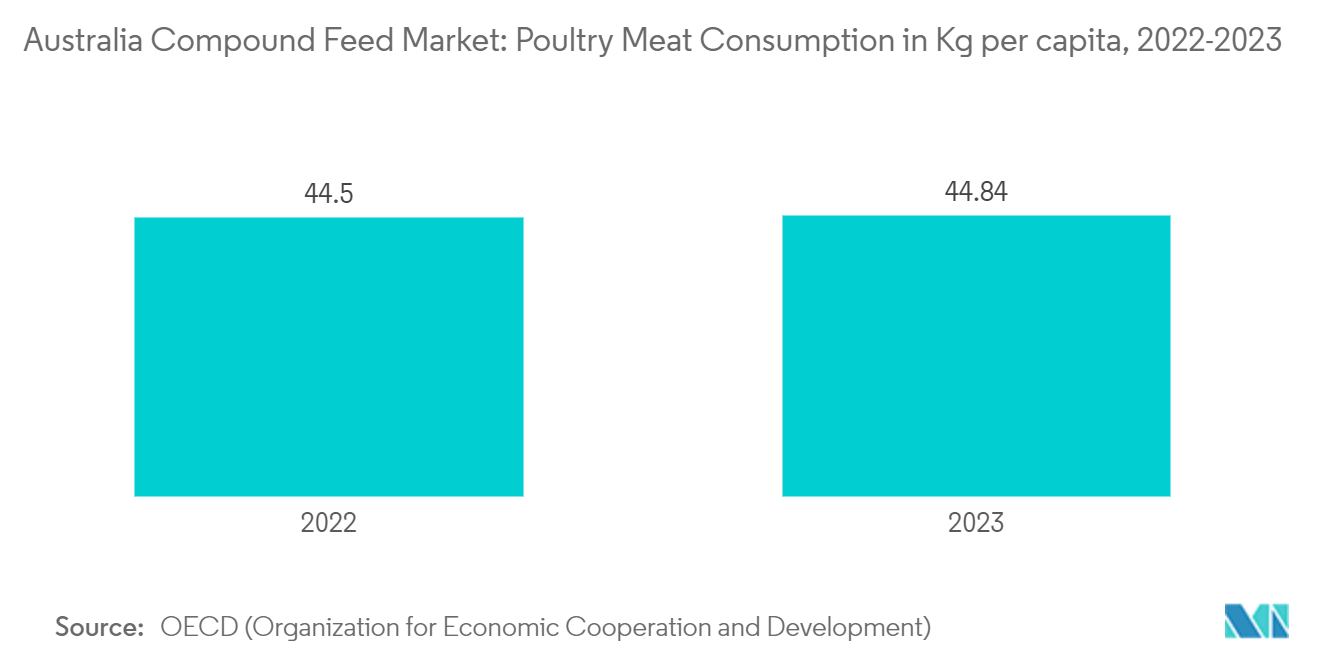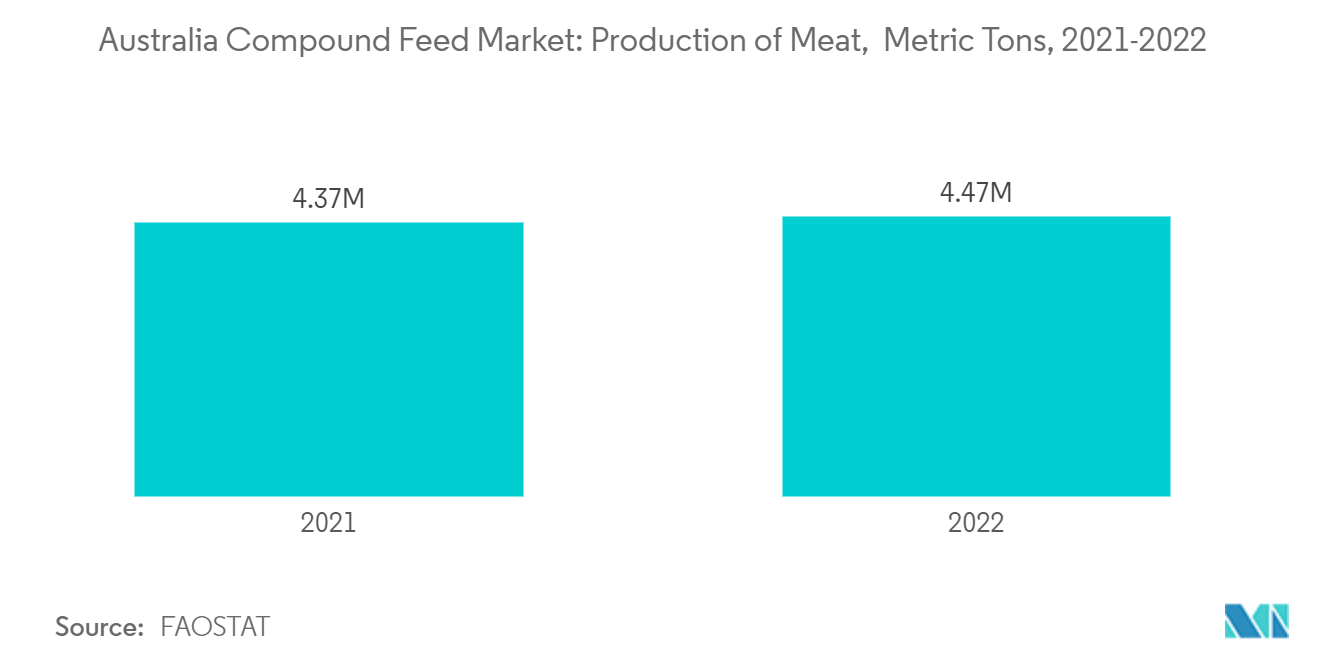Market Trends of Australia Compound Feed Industry
Poultry Segment Dominates the Market
With Australia's rising population and income over the past few years, there has been a significant rise in meat consumption in the country over the same period. Each Australian consumes 47.46 kg of chicken each year, making it the most consumed animal protein, surpassing beef, lamb, and hog. The chicken meat industry has been growing by 4.5% annually over the last 20 years. Chicken meat has become the most consumed meat in Australia, which will further increase compound feed consumption in the country. Further, as per the Australia Egg Organisation, per capita egg consumption grew to 263 eggs in the 2022-2023 financial year from 262 eggs in 2021-2022.
Besides, increased poultry consumption has ensured strong downstream demand and boosted industry revenue. Retail poultry prices have declined, while many substitute products, such as fish and seafood, beef, and lamb, have risen. Consequently, the relatively lower price of poultry in retail outlets has encouraged more consumers to purchase and consume poultry over the past five years. In addition, rising health consciousness has driven demand for leaner protein sources, such as poultry, benefiting the industry. Increasing life expectancy, limited availability of land and water resources for animal feed production, and growing use of these resources for food and ethanol production are increasing the demand for compound feed in the Australian meat industry.

Increasing Production of Animal Meat is Driving the Demand for Cereals
The Australian meat industry’s output has increased strongly, which is expected to continue during the forecast period. The meat industry, like chicken meat, is highly concentrated in Australia. Two major processors are responsible for supplying around three-quarters of the domestic chicken meat market. The production of chicken meat accounts for around 95% of total poultry production, with the remainder comprising duck and turkey meat production. Most of the chicken meat is entirely consumed within the Australian domestic market.
According to the FAOSTAT, meat production was observed to be 4,373,104.74 in 2021, which increased and reached 4,471,332.26 by 2022. Likewise, in 2021, Australia’s beef herd numbered 25.2 million animals. Over 100 nations have made roughly 65% of Australia’s total beef exports. Australia is the world’s most significant exporter of beef. Even though Australia’s primary beef feedlot sector relies heavily on grain feeding for export and domestic markets, compound feed ingredients like cereals have a lot of potential to replace grain feeding in this sector. Thus, the increasing growth of the poultry and beef industry for healthy meat consumption is enhancing the demand for quality cereals for nutrient supply, a key factor in delivering lucrative growth of the compound feeds market.
Consequently, cereals used in the animal feeding industry in Australia consist of various nutritional components, such as 21% to 27% of total dietary fiber, 12% to 16% of crude protein, and 18% to 22% of crude fat. Corn, barley, and sorghum are the most common cereal ingredients used in manufacturing compound feed. Wheat is the predominant supplier of dietary energy for poultry, swine, and beef diets. In addition to feeding cereals, its by-products, such as wheat bran, rice bran, and DDGS, are also used widely in poultry feed as cereal by-products, which are typically high in fiber or non-starch polysaccharides (NSP).


